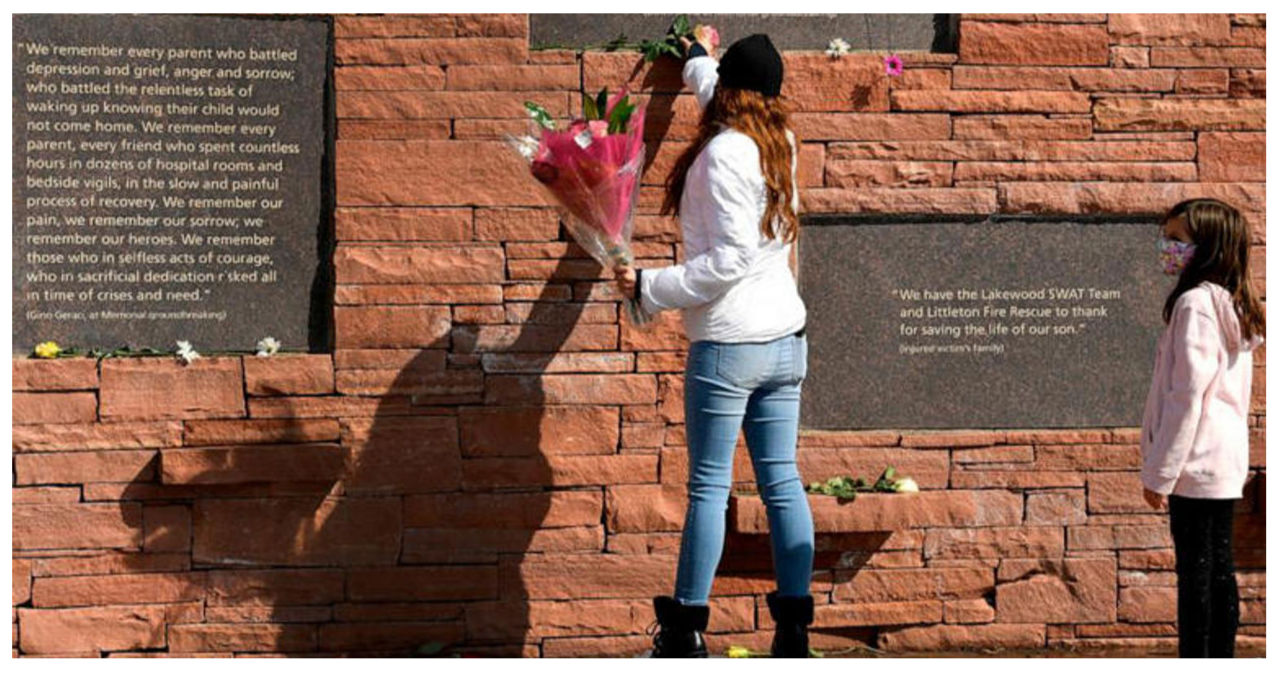The mass shooting at Columbine High School in 1999, where 12 students and one teacher were gunned down, became a pivotal moment in American history.
Twenty-five years later, some survivors reflect on their journey in coping with the physical and mental toll of post-traumatic stress disorder (PTSD), anxiety, and depression.
“It’s not just about that day, but more about who I have become,” Heather Martin, a survivor of the Columbine shooting, shared with ABC News Live. “It has shaped my identity and is a significant part of who I am today. The journey of overcoming the aftermath has played a crucial role in my personal growth.”
The April 20, 1999 shooting at Columbine High School was a school shooting unlike any other that America had experienced before.
“We had no idea what a school shooting was, couldn’t even comprehend the concept,” stated Kiki Leyba, a survivor and teacher.
An analysis conducted by ABC News of the Gun Violence Archive, a comprehensive database that monitors shootings across the United States, reveals that there have been 415 fatalities resulting from school shootings since the tragic events at Columbine. Furthermore, as of April 2, 2024, a total of 907 individuals have sustained injuries as a result of these incidents.
The survivors of the Columbine High School shooting were among the first to receive support from psychological experts to help them cope with post-traumatic stress disorder (PTSD).
SWAT teams entered the school 47 minutes after the shooting began, while it took law enforcement five hours to declare the school under control.
Grant Whitus, one of the initial SWAT officers to enter Columbine High School, shared his insights on the evolving tactics they learned over time. He mentioned that initially, the strategy was to surround and wait for the SWAT team. However, later on, they started training everyone to enter the premises. The approach shifted to forming small groups, with the first responders immediately engaging with the active shooter. Initially, they relied on a larger group, but it eventually reduced to one or two individuals. Regardless, the first person through the door was expected to confront the shooter, preventing them from causing harm while engaging with law enforcement.
The survivors of that fateful day express that they have been grappling with trauma for a quarter of a century, and the memories of the tragedy continue to linger within them.
“When I first started therapy, it took six weeks for me to receive a diagnosis of insomnia and the possibility of having PTSD,” shared Melissa Missy Mendo. Reflecting on her mother’s perspective, she recalled, “Someone once asked my mom why she felt that I would be different. She replied, ‘I knew things were going to be different because at 14 years old, Missy would sleep with her shoes on, sandwiched between her parents every night for weeks.'”
In the course of time, the shooting survivors endeavored to establish connections with individuals who could empathize with their suffering. The survivors of the Columbine shooting, being the pioneers of contemporary mass shooting survivors, formed a close-knit community, finding solace in their shared experiences. This community continued to grow, allowing them to find solace and understanding in one another.
The survivors of the Columbine shooting formed connections with survivors from other mass shootings, including the Aurora movie theater shooting in 2012 and the Washington Navy Yard shooting in 2013.
The Rebels Project is a network of individuals who provide mutual support to each other across the United States.
“I consider myself lucky to have a strong support system of survivors from The Rebels Project. There were other mothers in the group who had experienced similar situations,” Mendo expressed. “They advised me to ensure that the information I share with my children is suitable for their age and specific to the circumstances. The initial narrative should be something they can comprehend.”
While the adults who were former students are moving forward with unity, the retiring teachers are approaching their past experiences in different ways. Frank DeAngelis, the retired principal of Columbine High School, is embracing the lessons he learned from the tragic incident and using them to educate others.
With 25 years of experience under his belt, he serves as a safety and emergency management advisor for the school district, traversing the globe to share his expertise.
DeAngelis starts his day by remembering the names of the students who lost their lives: Cassie Bernell, Stephen Curnow, Corey DePooter, Kelly Fleming, Matt Kechter, Daniel Mauser, Danny Rohrbough, Dave Sanders, Rachel Scott, Isaiah Shoels, John Tomlin, and Lauren Townsend. Their memory serves as his motivation to carry on with his work. He is committed to ensuring that their lives were not lost in vain, along with the lives of other students and staff members who have tragically passed away. DeAngelis makes a solemn promise to honor their memory and continue his efforts.
Before retiring in 2014, DeAngelis reveals that he had to seek emergency medical attention on more than 10 occasions due to anxiety attacks. However, he found solace in assisting former students who were going through similar challenges, which ultimately helped him decrease the frequency of his own attacks.



